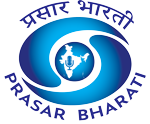India is expected to become the world’s third-largest economy by 2028 and more than double its GDP to $10.6 trillion by 2035, according to a Morgan Stanley report released on Wednesday.
The report estimates that three to five Indian states — including Maharashtra, Tamil Nadu, Gujarat, Uttar Pradesh, and Karnataka — could each approach the $1 trillion mark, placing them among the top 20 global economies by 2035.
“Based on the latest data, the top three states are Maharashtra, Gujarat, and Telangana,” the report said. It also highlighted Chhattisgarh, Uttar Pradesh, and Madhya Pradesh as the states that have shown the most improvement in rankings over the last five years.
According to the report, India is likely to contribute 20% of global growth over the next decade and emerge as a key driver of earnings for multinational companies.
Morgan Stanley’s economists underlined the crucial role played by India’s 28 states and eight Union Territories in achieving this growth trajectory. “States not only manage their own finances but also compete for investments by designing policies and easing business conditions. Ultimately, every factory or business is set up in a specific state,” the report said.
The success of India’s “competitive federalism,” it added, will determine whether the country can become a global manufacturing hub, double per capita income within seven years, and sustain the momentum in capital markets.
States are expected to play an increasingly important role as India moves toward becoming a $10.6 trillion economy. Their legislative and political autonomy enables them to shape industrial policy and attract investment.
Over the past decade, the report said, infrastructure spending has seen a major push. The Centre’s capital expenditure has doubled to 3.2% of GDP in FY25 from 1.6% in FY15. As a result, highway networks have expanded by 60%, airports have doubled, and metro rail systems have quadrupled.
Key central schemes — including PM Gati Shakti, the National Infrastructure Pipeline, Bharatmala, Sagarmala, and UDAN — have been implemented in tandem with state-level initiatives. States also lead investments in sectors such as power, water, and urban development.
“The Centre and states must continue to collaborate closely to meet India’s economic ambitions,” the report said.
—IANS














